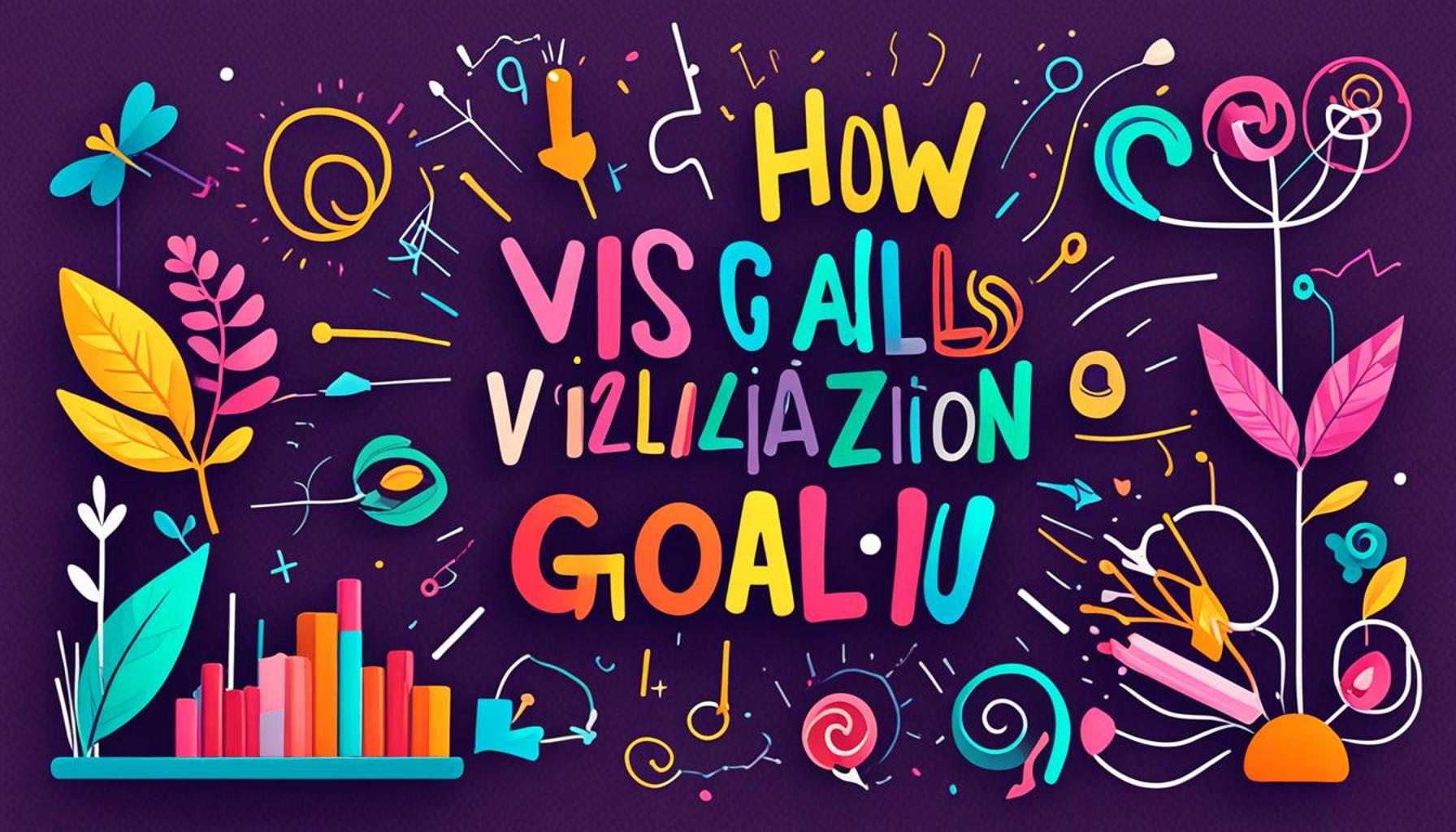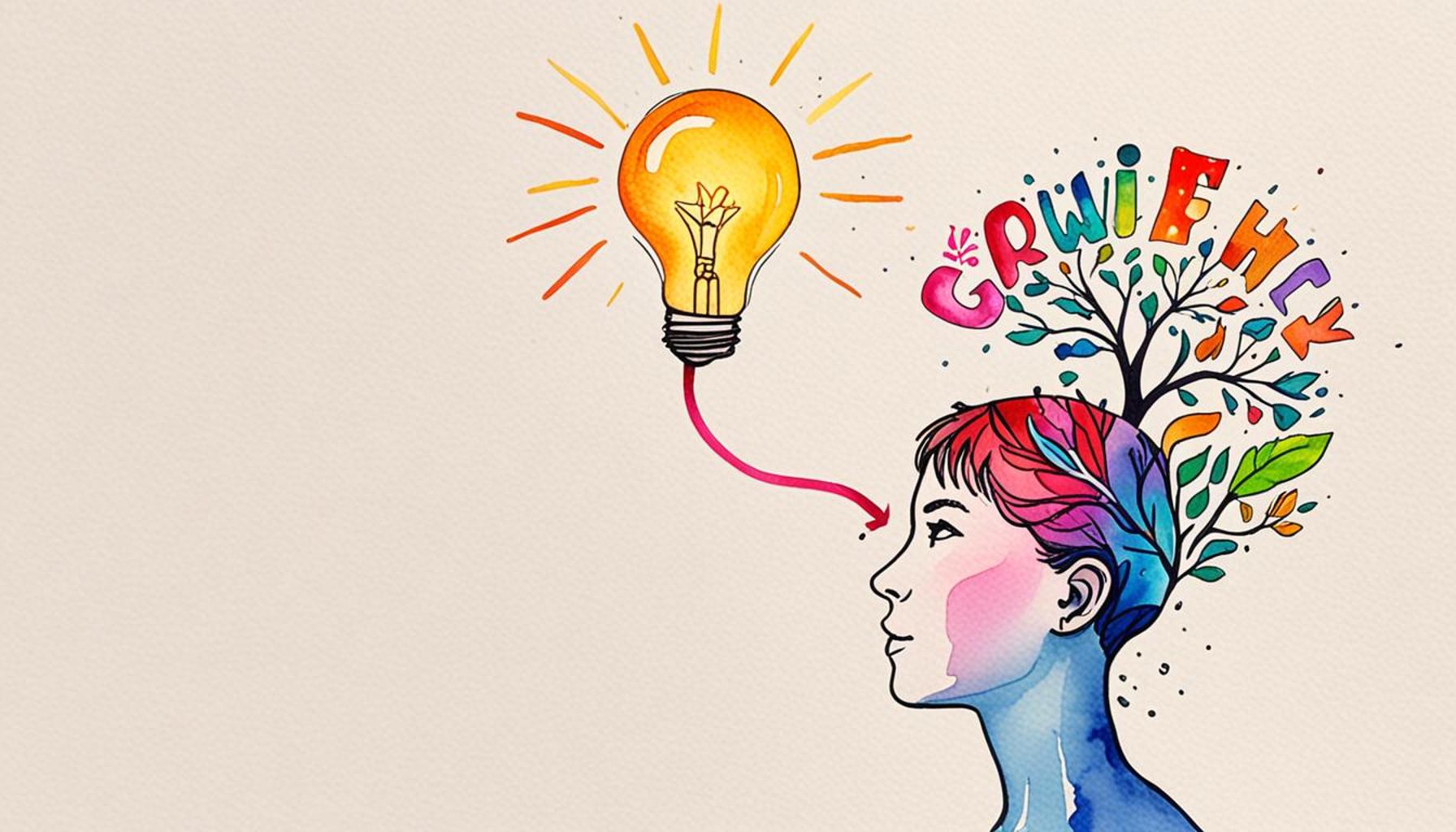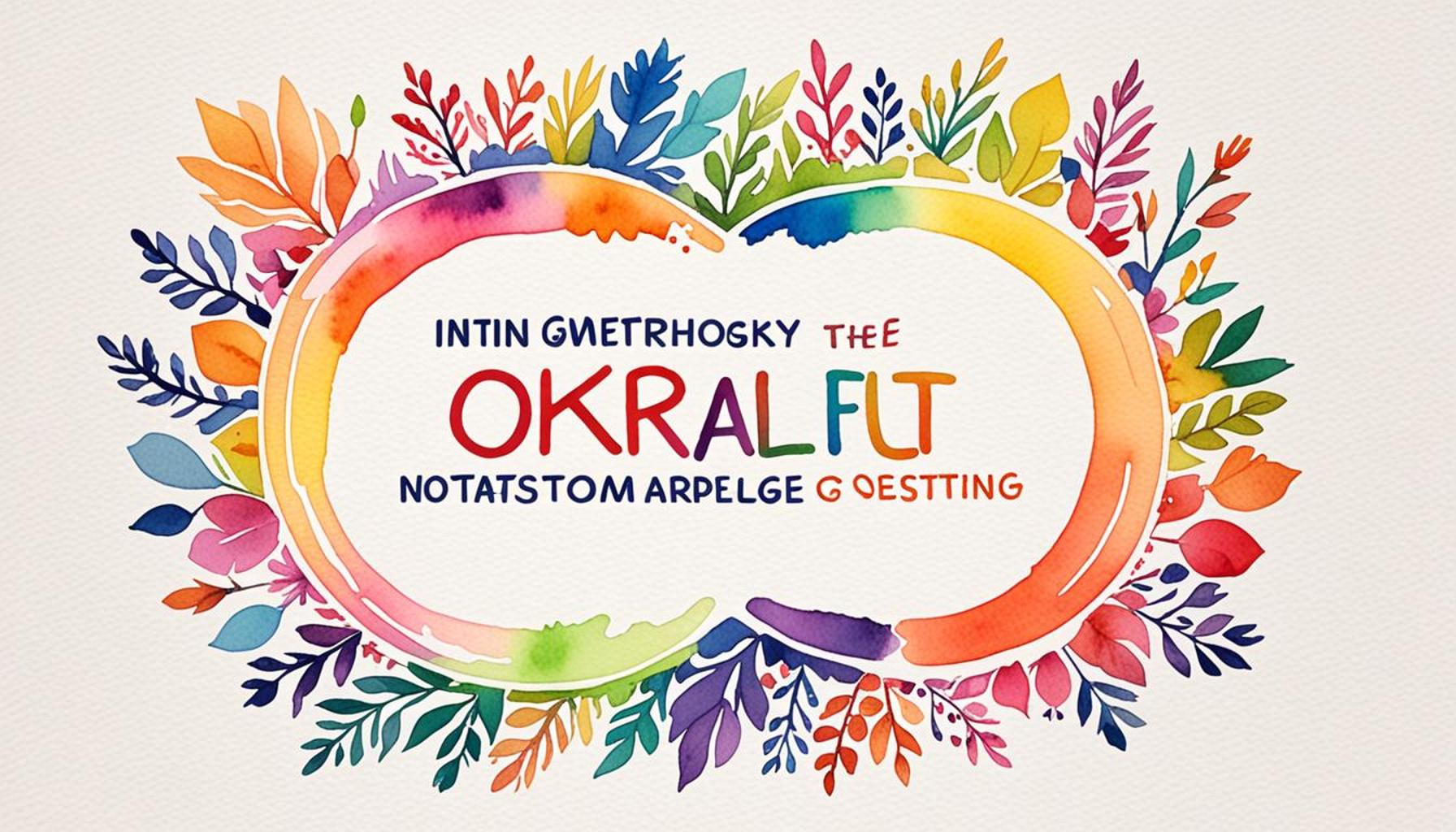How Goal Visualization Can Enhance a Growth Mindset

Understanding the Power of Visualization
Imagine having the ability to mold your aspirations into tangible achievements. This is where goal visualization enters the picture, serving as a powerful tool for those striving to cultivate a growth mindset. By vividly creating a mental image of our ambitions, we can significantly shape our motivation and enhance our decision-making processes.
What is Goal Visualization?
- Goal visualization is the practice of picturing your objectives in intricate detail, transforming mere ideas into vivid mental scenes.
- This technique engages your mind, sparking creativity and sharpening focus, allowing for a clearer path to your desired outcomes.
- Its application is vast, spanning across education, career pursuits, sports, and personal development. For instance, an athlete may visualize their performance during a critical event to boost confidence and precision.
In Nigeria, a nation ripe with ambition and opportunity, the impact of goal visualization can be particularly profound. For instance, consider a student who dreams of securing admission into a competitive university. By visualizing themselves receiving that coveted acceptance letter and attending orientation, they can bolster their study habits and prepare more effectively for exams. Similarly, an entrepreneur seeking to expand their business can visualize their success—envisioning product launches, satisfied customers, and thriving sales. These images can provide the impetus needed to overcome obstacles and take calculated risks.
The Link to a Growth Mindset
A growth mindset embodies the idea that skills and intelligence can evolve through effort and perseverance. Goal visualization bolsters this mindset by offering several key advantages:
- It encourages persistence when faced with challenges, allowing individuals to remain focused on their vision even during difficult times.
- Goal visualization promotes resilience; by mentally rehearsing success, one can navigate setbacks more effectively, reinforcing the idea that failure is merely a stepping stone toward achievement.
- Moreover, it enhances self-efficacy, which in turn builds confidence in one’s capabilities, empowering individuals to strive for their goals with conviction.
In an environment like Nigeria, where obstacles may be abundant yet opportunities are also vast, adopting goal visualization can be revolutionary. Whether you are a student, a budding entrepreneur, or a professional seeking advancement, harnessing the power of visualization can lead to notable transformations in personal and career growth. So as you delve deeper, consider not only the edges this technique can provide but also the potential it has to reshape your journey towards success!
CHECK OUT: Click here to explore more

The Transformative Effects of Goal Visualization
The potency of goal visualization not only lies in the clarity it brings to ambitions but also in its transformative effects on an individual’s mindset. When people consciously engage in visualizing their goals, they are actively participating in a cognitive process that fosters a growth mindset. This practice nurtures the belief that effort and resilience can lead to improvement and success. Ultimately, it is a dynamic method to enhance one’s performance and potential.
How Visualization Influences Motivation
To fully grasp the impact of goal visualization, it is essential to understand how it can amplify motivation. Visualization acts as a mental rehearsal, priming the brain for success. Studies have shown that when individuals visualize themselves achieving their goals, they are more likely to undertake the necessary actions to make those visions a reality. Whether it is a student preparing for crucial exams or a professional gearing up for a presentation, the practice of picturing success can cement one’s determination.
- When individuals envision themselves accomplishing their goals, it ignites a sense of excitement that propels them forward.
- Visualization helps to identify specific pathways towards achieving those objectives, making the journey seem less daunting.
- This technique can also diminish anxiety, as mental imagery equips individuals with strategies to overcome potential hurdles.
In Nigeria, where competition can be fierce and resources may be limited, employing goal visualization could be a game-changer. For example, a postgraduate student dreaming of securing a scholarship abroad might visualize themselves sitting in a prestigious university classroom. This mental image can motivate them to research application processes thoroughly or seek mentorship from individuals who have navigated similar paths. The visualization turns abstract desires into achievable targets, making the effort feel worthwhile.
Nurturing the Growth Mindset Through Success Imagery
Another crucial aspect of goal visualization is its ability to nurture a growth mindset through the imagery of success. By mentally rehearsing successful outcomes, individuals can cultivate an internal dialogue that reinforces resilience and self-belief. This is especially vital in a vibrant country like Nigeria, where individuals face numerous challenges, from economic instability to educational barriers.
- When setbacks occur, visualizing prior successes can help individuals remember that improvement is always possible.
- Imagining achievements can reduce the fear of failure; instead of viewing mistakes as roadblocks, they can be seen as valuable learning opportunities.
- A deepened belief in their capabilities can emerge, leading individuals to embrace challenges and pursue growth actively.
By integrating the practice of goal visualization into daily routines, individuals in Nigeria and beyond can cultivate the motivation, resilience, and open-mindedness necessary for personal and professional development. As citizens navigate their unique paths, this powerful tool promises to aid in overcoming the barriers they face, ensuring that the journey towards achievement is not merely a task, but an inspiring venture filled with potential.
Exploring the Benefits of Goal Visualization
Goal visualization is a powerful technique that can significantly enhance an individual’s growth mindset. By vividly imagining desired outcomes, individuals can strengthen their belief in the possibility of achieving their goals. This mental imagery not only fosters motivation but also encourages persistence in the face of challenges. To delve deeper into how goal visualization can catalyze this transformation, we present the following table highlighting its key advantages and benefits.
| Category | Advantages |
|---|---|
| Enhanced Focus | Goal visualization sharpens concentration by clearly defining what needs to be achieved, thereby eliminating distractions. |
| Increased Motivation | Visualizing success stimulates an emotional response that propels individuals to take actionable steps toward their goals. |
| Building Resilience | When setbacks occur, a strong vision of goals helps individuals to remain resilient and determined, reinforcing a growth mindset. |
| Overcoming Limiting Beliefs | Visualizing achievements dismantles self-doubt and limiting beliefs, allowing for increased confidence in one’s abilities. |
Understanding these benefits makes it clear how powerful goal visualization truly is in fostering a growth mindset. By using visualization techniques, individuals can not only enhance their performance in various endeavors but also significantly improve their overall well-being and adaptability in a rapidly changing world.
SEE ALSO: Click here to read another article
Building Confidence Through Goal Visualization
One of the most remarkable benefits of goal visualization is its role in building self-confidence. When individuals practice visualization, they create a mental environment where they can practice skills necessary for success. This not only allows them to mentally prepare for the challenges ahead but also reinforces their self-worth and belief in their capabilities. In a country like Nigeria, where ambition often grapples with systemic challenges, cultivating confidence through visualization becomes imperative.
The Science of Self-Efficacy
According to psychological research, self-efficacy—the belief in one’s ability to succeed in specific situations—plays a pivotal role in achieving goals. Visualization can foster this self-efficacy by allowing individuals to see themselves overcoming obstacles in vivid detail. For example, a budding entrepreneur in Nigeria might visualize giving a compelling pitch to potential investors, complete with the confident body language and persuasive arguments they plan to use. By picturing such scenarios repeatedly, they can bolster their belief that they can indeed realize this vision, making them more likely to take the plunge and actually seek out investors.
- Visualization can simulate real-life experiences, diminishing feelings of imposter syndrome and bolstering self-belief.
- This practice acts as a rehearsal, enabling individuals to mentally refine their approaches and strategies.
- Over time, consistent visualization leads to a cumulative effect on confidence, making individuals more courageous in pursuing their aspirations.
Shifting Perspectives on Failure
In many cultures, including Nigeria, there is often a stigma associated with failure, which can halt progress. However, goal visualization can help alter this narrative by encouraging individuals to view failure through a constructive lens. When one envisions not just the successes but also the missteps along the way, they learn to appreciate that failure is integral to growth. Instead of fearing failure, people can cultivate a mindset that sees it as a natural part of the learning process.
- Envisioning possible setbacks can prepare individuals psychologically for overcoming challenges, allowing them to devise solutions in advance.
- This proactive approach makes adversities less daunting and positions individuals to respond with resilience.
- Through visualization, the experience of failure becomes a stepping stone in the journey towards success, rather than an endpoint.
Furthermore, goal visualization helps demystify the road to achievement. For instance, a student in Nigeria may use visualization techniques to envisage each stage of their academic journey, from reading books in the library to acing an examination. This not only makes their goals seem tangible but also reinforces the understanding that the learning process includes both triumphs and temporary setbacks.
By utilizing goal visualization as a potent mental strategy, individuals can significantly enhance their growth mindsets. Whether in the context of education, career, or personal aspirations, the act of visualizing goals can unlock the door to greater confidence, resilience, and a transformative perspective on growth. In a vibrant and challenging landscape such as Nigeria, harnessing the power of mental imagery can propel individuals forward on their path to success, scrambling over barriers and reaching for their aspirations with renewed vigor.
LEARN MORE: This related article may interest you
Embracing the Power of Visualization
In conclusion, goal visualization emerges as a powerful tool that not only cultivates a growth mindset but also fosters the resilience and self-confidence essential for overcoming challenges. By envisioning success and the pathways to achieve it, individuals can transform the way they perceive their capabilities, facilitating the important shift from fear of failure to a more constructive view of setbacks. In Nigeria, where ambition is often met with various hurdles, this mental strategy can serve as a crucial cornerstone for personal and professional growth.
- The process of visualization enables individuals to simulate real-life experiences, effectively preparing them for the hurdles they might face.
- Moreover, it reinforces the notion that failures are merely stepping stones towards ultimate success, emboldening the belief that persistence leads to achievement.
- As individuals regularly practice visualization, they nurture a mindset centered on learning and improvement, making them more adaptable in an ever-changing environment.
Furthermore, as more individuals embrace this practice, it contributes to a cultural shift that celebrates resilience and tenacity over fear of failure. Therefore, exploring and implementing visualization techniques can be a transformative practice for students, entrepreneurs, and professionals alike. Ultimately, as individuals in Nigeria harness the potential of their imaginations, they will likely find themselves on a path filled with innovation, empowerment, and growth, unlocking the doors to their aspirations.


